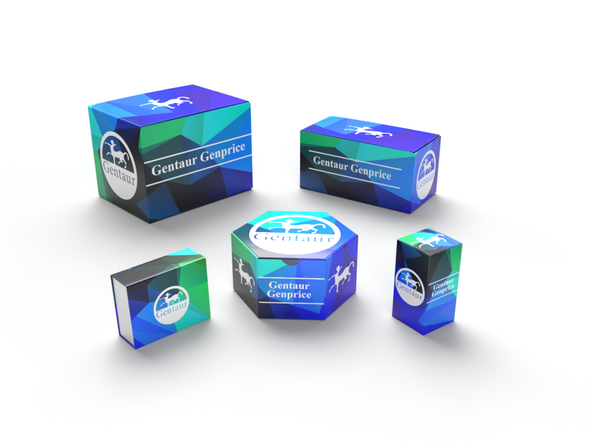749
Rat Cluster of differentiation 30 (CD30) ELISA Kit | KTE100069
- SKU:
- 749-KTE100069
- Availability:
- Usually ships in 5 working days
Description
Rat Cluster of differentiation 30 (CD30) ELISA Kit | KTE100069 | Gentaur UK, US & Europe Distribution
Application: This Rat Cluster of differentiation 30 (CD30) ELISA Kit employs a two-site sandwich ELISA to quantitate TNFRSF8 in samples. An antibody specific for TNFRSF8 has been pre-coated onto a microplate. Standards and samples are pipetted into the wells and anyTNFRSF8 present is bound by the immobilized antibody. After removing any unbound substances, a biotin-conjugated antibody specific for TNFRSF8 is added to the wells. After washing, Streptavidin conjugated Horseradish Peroxidase (HRP) is added to the wells. Following a wash to remove any unbound avidin-enzyme reagent, a substrate solution is added to the wells and color develops in proportion to the amount of TNFRSF8 bound in the initial step. The color development is stopped and the intensity of the color is measured.
Detection Method: Colorimetric
Conjugate: N/A
Sample Type: Cell culture supernatants#Serum#Plasma#Other biological fluids
Assay Type: Multiple steps standard sandwich ELISA assay with a working time of 3-5 hours. It depends on the experience of the operation person.
Kit Component: • Rat Cluster of differentiation 30 microplate
• Rat Cluster of differentiation 30 standard
• Rat Cluster of differentiation 30 detect antibody
• Streptavidin-HRP
• Standard diluent
• Assay buffer
• HRP substrate
• Stop solution
• Wash buffer
• Plate covers
Features & Benefits: Rat Cluster of differentiation 30 (CD30) ELISA Kit has high sensitivity and excellent specificity for detection of Rat TNFRSF8. No significant cross-reactivity or interference between Rat TNFRSF8 and analogues was observed.
Calibration Range: Please inquire
Limit Of Detection: Please inquire
Usage Note: • Do not mix components from different kit lots or use reagents beyond the kit expiration date.
• Allow all reagents to warm to room temperature for at least 30 minutes before opening.
• Pre-rinse the pipet tip with reagent, use fresh pipet tips for each sample, standard and reagent to avoid contamination.
• Unused wells must be kept desiccated at 4 °C in the sealed bag provided.
• Mix Thoroughly is very important for the result. It is recommended using low frequency oscillator or slight hand shaking every 10 minutes.
• It is recommended that all samples and standards be assayed in duplicate or triplicate.
Storage Instruction: The unopened kit should be stored at 2 - 8°C. After opening, please store refer to protocols.
Shipping: Gel pack with blue ice.
Precaution The product listed herein is for research use only and is not intended for use in human or clinical diagnosis. Suggested applications of our products are not recommendations to use our products in violation of any patent or as a license. We cannot be responsible for patent infringements or other violations that may occur with the use of this product.
Background: This protein is a member of the TNF-receptor superfamily. This receptor is expressed by activated, but not by resting, T and B cells. TRAF2 and TRAF5 can interact with this receptor, and mediate the signal transduction that leads to the activation of NF-kappaB. This receptor is a positive regulator of apoptosis, and also has been shown to limit the proliferative potential of autoreactive CD8 effector T cells and protect the body against autoimmunity. Two alternatively spliced transcript variants of this gene encoding distinct isoforms have been reported.
Alternative Names: TNFRSF8; CD30; D1S166E; Ki-1; CD30 antigen; CD30L receptor; Ki-1 antigen; cytokine receptor CD30; lymphocyte activation antigen CD30
Search name: TNFRSF8; CD30; D1S166E; Ki-1; CD30 antigen; CD30L receptor; Ki-1 antigen; cytokine receptor CD30; lymphocyte activation antigen CD30
Tag: TNFRSF8










